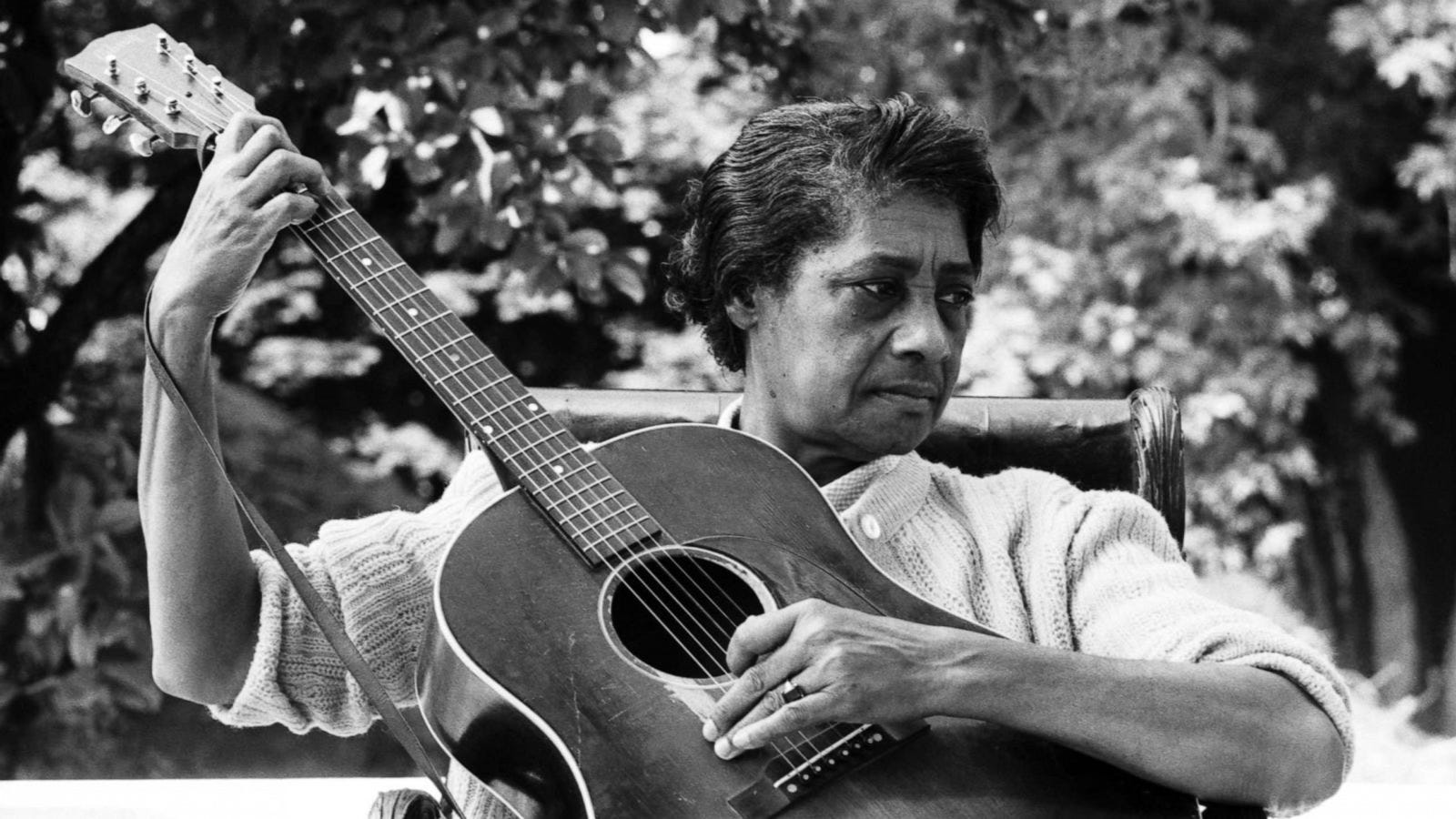Elizabeth Cotten, Ruth Crawford Seeger, silence, fear & what makes a satisfying ending
“The key to the future of the world is finding the optimistic stories and letting them be known.” —Pete Seeger
Announcements and Asks
🏹 Don’t lose your art this summer! Register for LOST ART SUMMER CAMP, 10 weeks of practice-based creativity designed with the undone spirit of the season. We will embody a mindset and try our hand at assignments of leisure and boredom. Learn more and register here.
🤑🧙🏻♀️Know a feminist tax preparer or accountant? I’d be so grateful if you replied to this email and shared their information with me.
🏝️ Have you (or someone you know) lived on an unbridged island? Feel like describing the experience for a project I’m working on? Lmk!
📚 If you’ve ever wanted to disappear or escape the madness of artist-as-online-brand, I must urge you to read Dear Edna Sloane by
, out this Tuesday, April 30.January 5, 1893 or so, Elizabeth “Libba” Cotten (nee Nevills) was born near Chapel Hill, North Carolina. Her mother was a midwife, he father worked a variety of jobs, including dynamite setter (!). Her grandparents were freed slaves.
Libba was the youngest of five in a musical family. Whenever her brother, Claude, left the house, she took the banjo down from the wall in his bedroom to play. She’d break a string and return the banjo. Her brother would replace the string, and the process would repeat itself, until her brother stopped replacing the strings, hoping Libba would stop taking his stuff, but it didn’t work.
“Three strings, four strings, didn’t have to be five, I’d play it anyway,” she told Pete Seeger in 1965 on his show, Rainbow Quest.
I’ve never thought much of Pete Seeger in my life, but to watch this clip is to watch two souls in bodies, Seeger is so visibly — what is the word? moved? entranced? awed? — by Libba before him, it’s quite something.
Claude moved out, taking his banjo with him. Nine-year-old Libba left school and began to work in white people’s homes, making 75 cents a month. She saved up $3.75 and bought her own six strings, a Stella guitar from Sears Roebuck. Left-handed Libba taught herself to play guitar.
“When I started playing, I would just do songs that I knew about because I thought it would be easier,’" Cotten told the New York Times in 1983:
“Knowing the song, I could hum it and find the string to press on, so I kept on doing that until I learned the song. When I did one, then I did two, and when I did two, I did three. I just learned them one at a time.’’
Elizabeth Cotten was left-handed and entirely self-taught. Some left-handed guitar players, like Paul McCartney, play “upside down”—using the left hand to pick and strum, and holding the neck with their right—but they restring the guitar the traditional way, with the bass string closest to the player’s face. When Libba swiped her brother’s banjo, she turned it over upside down, playing the strings backwards. She continued this method as she learned guitar. Picking the bass with a single finger and the melody with her thumb, she developed an influential style now known as “Cotten picking.”
What kind of 11-year-old wrote the lonely and melancholic, “Freight Train”? Cotten’s most famous song was made a U.K. hit by Peggy Seeger and a West Village folk singer staple in the 1960s, covered by Peter, Paul, and Mary, the Grateful Dead, Bob Dylan, Joan Baez, and later Devendra Banhart, Laura Veirs and many others.
Keep reading with a 7-day free trial
Subscribe to LOST ART to keep reading this post and get 7 days of free access to the full post archives.



